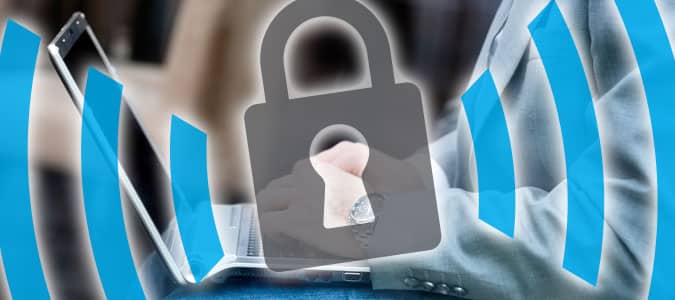Wi-fi and broadband services are the fastest and easiest ways to access the Internet from any location. They are used today around the world in coffee shops like Starbucks, inside the home and in business offices around the world.
When you are using these services from home or your office it is important to have encryption and at least some form of network security in place so that the system is not accessed from outside sources. Here’s how you can do that…
When a person can access your connection there is viable information that they may become privy to. This may include your financial data as well as your personal information. The Internet is the most common means of identity theft. Hackers retrieve the information needed from your credit card number to make purchases on your behalf or to withdraw your money. Another thing that can be obtained by lack of Internet security is your social security number and birth date.
These are things that are used to make big purchases. Once your information is compromised it is very hard to get it back. The downfall consequences from identity theft can be life altering. Many jobs today require credit checks. There is the possibility that you may loose out on a job opportunity if your identity is stolen. You could possibly lose your home, car and career amongst other things if this happens. There have been many identity theft cases where a criminal used someone else’s identity to perform illegal actions. If this happens to you, it could affect your permanent record. The process of identifying and fixing a life after identity theft is a long and stressful process. Here are five different steps that you can take in order to prevent this from happening to you.
Related: Top 5 Ways to Secure Your Network
Step #1 – Router
The first step is the go through the factory settings on your router. Routers that are purchased today usually have standard settings on them. Most are identical to each other. This results in a lack of protection to prevent someone from jumping onto the router. The standard IP address for routers is normally 192.168.1.1. There are also standard login requirements that sometimes have a generic username and password such as admin. This, because it is standard and easy, is one of the first things that a hacker will try. To change this you need to go to the configuration page for your router and login on your computer. Change everything from your IP address to your password. Make sure it is a strong password but something that you will be able to remember.
Step #2 – SSID Broadcasting
The second step is to configure and change the SSID broadcasting. This is the access that others need to find your network and router through a search. Disable it so that nobody can find it when they are doing a routine search. On the configuration page for your router click the box to turn it off.
Step #3 – Encryption
The third step is to encrypt your device and router. There are multiple encryption methods that one can use to get this done. These can include the WEP or wired equivalent privacy, WPA or Wi-Fi protected access, and WPA2 encryption. We recommend using one of the last two options because they are the strongest methods available. This means that they are the less likely to get hacked.
Step #4 – Media Access Control
Next you will want to make sure that your router allows Media Access Control (MAC) to filter the router that you are currently using. This is done by logging into your account on the configuration page for your router and clicking the button that will allow filtering. This will give you the ability to decide who can and cannot use your router. You can grant or deny access to any computer trying to access your router.
Step #5 – Firewall
The last option is using a firewall. Most routers that are sold today already have firewall protection. This gives more security to the device. This needs to be enabled after purchase. A firewall will not retract harmful proceedings on your computer and it will not prevent theft or access to your information of any kind. The main reason that we recommend it is because it will help to prevent Denial of Service or DOS attacks that may occur. These attacks in the end will over load the connection you have with the internet and eventually will hinder your ability to use the internet at all.
Related: Is Your Firewall Configured Correctly?
Final Notes About Security…
Letting a hacker have access to your computer is very dangerous. Although routers can be costly, they are necessary to stabilize your security. You are not just protecting yourself. You are protecting your future and your family. If a hacker gets into one of your computers, they can most likely hack every single one you own. Protect yourself from identity theft and possibly dangerous situations that can arise because of it. Check your system frequently to make sure nothing is out of the ordinary. Also check your credit report and banks frequently. If something doesn’t look right or is wrong immediately consult someone on the problem. It can make a big difference in the end.


